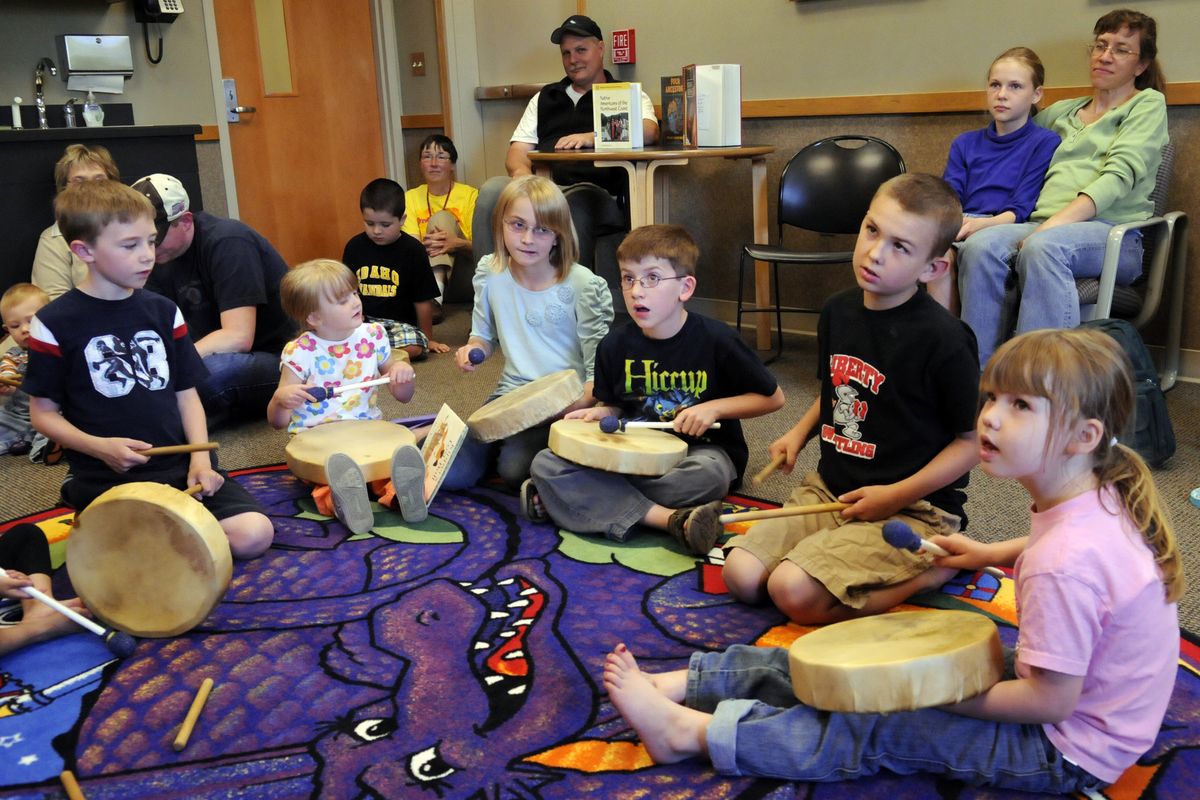Unique summer programs at libraries to entertain

It’s summertime and your kids might be complaining of boredom.
To keep them busy, check out some of the children’s activities going on in the Spokane County Library District.
“Get Medieval at the Library” is a program for students to learn about the Code of Chivalry and try on suits of armor.
They also can listen to traditional Scottish music with a live bagpiper and drummer; learn about tessellations, or patterns combining art and math; or hear the story of “Peach Boy: A Kamishibai Tale,” which includes authentic Japanese costumes.
LaRae Wiley, executive director of the Salish School of Spokane, visited the Fairfield Library two weeks ago to share Salish stories, language and music.
About 10 children and their parents were there, ready to play instruments and hear stories. Wiley taught them how to say “Hello” and “My name is …” before she explained that Salish is a language that not many people speak anymore.
“What does the word ‘endangered’ mean?” she asked the students.
“It’s something that might go away,” one of them said.
It’s the first language that was spoken in the Greater Spokane area, spoken by the Spokane, Coeur d’Alene, Kalispel and Colville tribes.
Wiley switched between English and Salish while she talked to the students and brought her 4-year-old granddaughter, Mireya, along to help out. Wiley said she only speaks to Mireya in Salish so the girl can become fluent in the language of her heritage.
Along with the language lessons, the students helped sing traditional songs using drums, called pumin, sticks and rattles.
They drummed along to the “Quail Dancing on a Rail,” “The Horse Song” and a Salish version of “Head, Shoulders, Knees and Toes.”
Wiley explained the tradition of storytelling in the Native American culture and how they used to tell them in the winter, when it is dark and cold and families gathered to hear stories.
“That’s a perfect time for telling stories,” she said.
She told them three stories – “How Bear Lost His Tail,” which included a character named Coyote known for playing tricks. But Coyote had a brother named Fox who once turned the tables on the prankster in “How Fox Tricked Coyote.” Then she told the story of “How Chipmunk Got Her Stripes,” which included a scary monster who threatened to eat young chipmunks who had wandered off into the forest.
The adults even got in on the action, asking questions about Salish, such as if the language had originally been written down.
Wiley said Salish was only an oral language until the 1930s and ‘40s when it was put into written form using the International Phonetic Alphabet.
Berenice Emehiser brought her daughter, Jane, 11, to the library to hear the stories. She said she often brings her children to the library for these programs while home-schooling her children.
“There’s a lot of really neat programs being offered,” she said.
Jane had a good time listening to the stories and playing music.
“I thought it was fun,” she said. “I thought the music was neat.”